SDG Story: Glasgow
Edited on
24 March 2022Glasgow’s Vision for 2030

‘A net zero carbon and climate resilient city, with a healthy biodiversity and healthy people.’

Background
There is global consensus that climate change is the greatest challenge of our lifetime. Furthermore, it is acknowledged that if we are to keep global warming to safe limits, major transformative action and commitment will be required from a range of state actors, businesses, individuals, and communities. This is an unprecedented global emergency and, accordingly, these are unprecedented tasks – and, crucially, time is rapidly running out.
As we seek to recover from the Covid-19 pandemic, an unforeseeable crisis, we know we need to turn once more to the emergency which we did see coming.
Glasgow, through Sustainable Glasgow, has been working to reduce its CO2 emissions since 2010 and declared a Climate and Ecological Emergency in 2019, publishing a set of recommendations which were drafted by two working groups that included representation from all political groups on the city. Principal amongst these recommendations was one for the city to become carbon neutral city by 2030, which was endorsed by the city.
The Council declared a climate and ecological emergency at its meeting of 16 May 2019. The working group produced a report, with the input of many expert stakeholders, which made 61 recommendations, with a target for the city to achieve carbon neutrality by the year 2030 at its heart.
When the Council declared a climate and ecological emergency, it also agreed that, following presentation of the Climate Emergency Working group’s report, a short life process should be put in place to establish whether additional recommendations are required to address the ecological aspects of the emergency specifically.
The Ecological Emergency Working Group produced a report, with input from expert and independent stakeholders, which made 25 recommendations, with the ambition to halt and reverse biodiversity and habitat decline in the city.
Much work has been undertaken across the city to determine how it can address these recommendations and how best it can exercise a local leadership role in drawing together the collective action of other agencies, businesses, and communities across the city. This included a number of citizen surveys, a citizen’s assembly and a number of workshops with local organisations and individuals
There is an open acknowledgement of the need for more rapid and radical action to reduce carbon emissions into the environment, reverse biodiversity decline and build a more climate resilient city.
Whilst there is an understandable focus on stemming the flow of carbon dioxide into the atmosphere, there is also a corresponding emphasis on working with nature on climate solutions and nurturing our own relationships with the natural environment, which our social and economic systems intrinsically depend on.
Both reports mentioned above, link the city with other local partners and their recommendations are looking to ensure that we deliver a healthier, more equitable and resilient city. In short, we must transform the city and mobilise Glaswegians in that transformational journey to 2030.
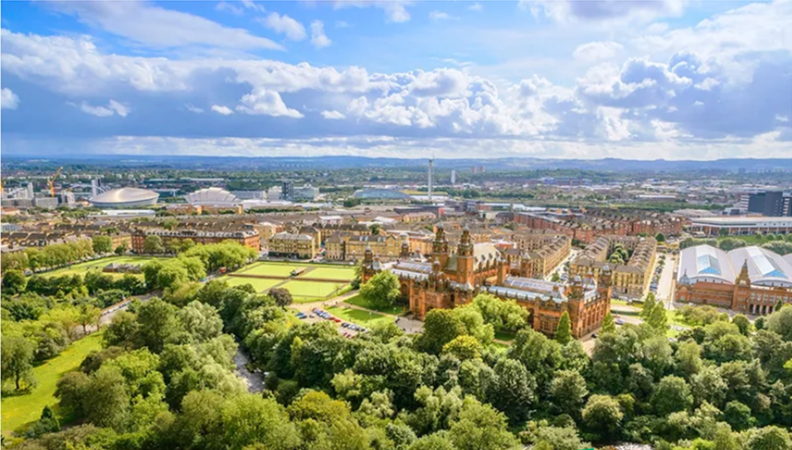
The actions necessary to achieve our vision for 2030 cut across a range of areas, including transport, natural environment and biodiversity, the economy and energy - with the need for sustainability and social justice core to their delivery.
Aligning these actions with the Sustainable Development Goals will help to foster a meaningful city conversation amongst our institutions and the communities whom they serve, as well as with other cities across the world also seeking to tackle this climate and ecological emergency. The Sustainable Development Goals, therefore, represent both a response and a rallying call from Glasgow City Council to itself and to the wider city in tackling the climate emergency.
Glasgow’s Challenge
Glasgow’s ambition is to become one of the most sustainable cities in Europe. The city has already achieved its target of reducing CO2 emissions by 30% by 2020, achieving this goal by 2015, through a combination of energy efficiency and local generation. But this also means that many of the quick wins have been realised. In this light, the city recognises that there needs to be a sharp increase in the scope, scale, and intensity of delivery of projects to set Glasgow on course to achieving its net zero carbon goal for 2030.

Transport emissions are the biggest challenge for the city, as the sector has seen slower reductions than in other sectors such as Domestic and Commercial & Industrial.
Glaswegian communities experience many inequalities around income, opportunity, and discrimination. The city believes that environmental and social justice are intrinsically linked and addresses these as single, combined issues.
The city’s ambition is to reduce emissions through direct mitigation, while also adapting to the impacts of climate change and addressing the ecological emergency. All of which will provide carbon offsetting opportunities, whilst also improving quality of life and place in the city.
We know too that we need to build resilience to the local weather impacts resulting from global climate change. Parts of the city are already at risk of flooding. Climate change threatens to bring the total number of homes and businesses in danger of being flooded from circa 45,000 currently to almost 60,000 by 2080. Attention must therefore be paid not only to reducing our emissions, but to adapting the city and increasing resilience to the effects of climate change which are already locked in.
The City must acknowledge openly that our current momentum, though laudable, will not result in sufficient action to ameliorate and reverse the impacts of climate so clearly demonstrated in the changing trends in weather in the city. 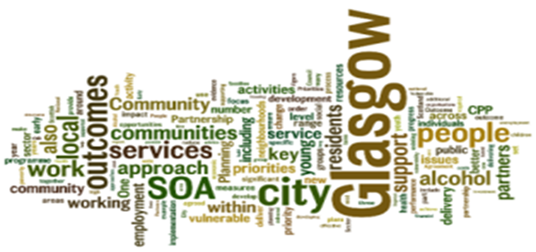
We must also recognise that the impact that Glasgow can make in global terms to slowing climate change is relatively small, which underlines the need to take action to increase resilience.
Effective climate action can also bring about better, more equitable health and wellbeing, a stronger and inclusive economy, and more resilient communities.This can also create Climate-smart and low carbon places, while generating thriving economies.
We therefore follow two fundamental principles:
- In addressing the climate crisis, we must not further disadvantage people, and communities who already experience significant inequalities. Ensuring that any barriers to their transition to net zero carbon are understood and addressed.
- In creating a safer, resilient, and more sustainable city we should also build a just and more equitable city.
Glasgow’s vision to 2030
To achieve Glasgow’s vision of becoming a just, net zero carbon and climate resilient city by 2030, it is essential that we work in collaboration with our communities, our institutions, and our people to promote effective co-design, co-development, transparent delivery and monitoring of sustainability decision making and climate action. Glasgow identified five key thematic areas to help achieve our vision.
- Empowered Community
Glasgow is one of the most diverse cities in Scotland and its people are often considered the city’s biggest asset and this is reflected in local campaigns such as People Make Glasgow and People Make Glasgow Greener. However, according to the Understanding Glasgow Model, and similarly to the Scottish average, only 20% of adults in Glasgow felt that they could influence decisions affecting their local authority.
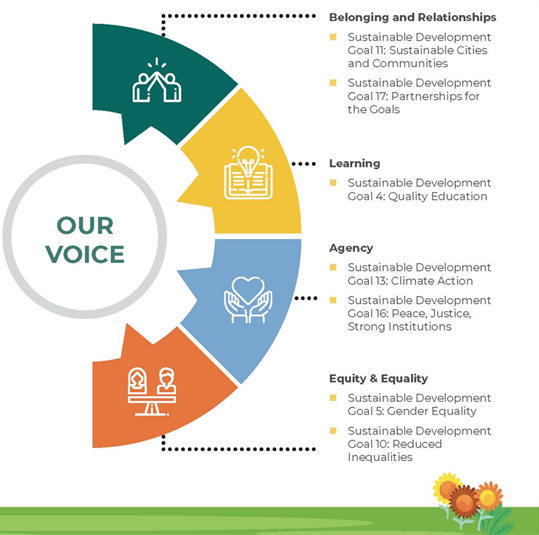 The 26th UN Climate Change Conference of the Parties (COP26) was hosted by Glasgow in November 2021. This was an exciting opportunity not only to showcase the work the City has undertaken, through initiatives such as ‘Sustainable Glasgow’, ‘Resilient Glasgow’ and ‘People make Glasgow Greener’ but also to build a greener and climate smart legacy for future generations.
The 26th UN Climate Change Conference of the Parties (COP26) was hosted by Glasgow in November 2021. This was an exciting opportunity not only to showcase the work the City has undertaken, through initiatives such as ‘Sustainable Glasgow’, ‘Resilient Glasgow’ and ‘People make Glasgow Greener’ but also to build a greener and climate smart legacy for future generations.
To ensure that we build a successful legacy from COP26, the city is committed to improving how we communicate and work with local communities, not only enabling participation but also improving accountability and transparency.
Vision for 2030
By 2030 Glaswegians feel empowered to take action to address climate change locally and can participate in and influence decision making.
- A Just and Inclusive City
Glasgow faces significant challenges in relation to deprivation. With almost half (47%) of Glasgow’s residents, residing in the 20% of most deprived areas in Scotland. In contrast, only 4.4% of the population live in the 10% of least deprived areas in Scotland (based on 2017 population estimates). Around 34% of all children in the city were estimated to be living in poverty in 2017, but the distribution of child poverty and vulnerability to child poverty varies dramatically across Glasgow. In 2016, 19% of children lived in workless households, this is 6.5% higher than the Scottish average. Thisfigure will have been exacerbated by COVID 19.
 There are significant health, social and economic inequalities in the city evidenced by disparity in health and life expectancy across different neighbourhoods in the city.
There are significant health, social and economic inequalities in the city evidenced by disparity in health and life expectancy across different neighbourhoods in the city.
The impacts of our changing climate, such a severe weather events, will affect all our communities, but it is those most vulnerable communities in Glasgow that will be most impacted. In this way climate impacts become a stress multiplier, adding additional burden upon already existing stresses, such as poverty or inequality.
As a result, Climate change brings huge challenges for building greater social justice and inclusion.
Vision for 2030
By 2030 we live in a just and inclusive City where the transition to a net-zero society ensured that the benefits of climate action widely, and that costs were distributed based on ability to pay.
- A Well-Connected Thriving City
Glasgow is Scotland’s most renowned post-industrial city. It is the metropolitan centre of a unique and diverse regional housing system which has changed significantly over the past quarter of a century. There are unique opportunities and challenges linked to Glasgow’s built heritage and industrial legacy.
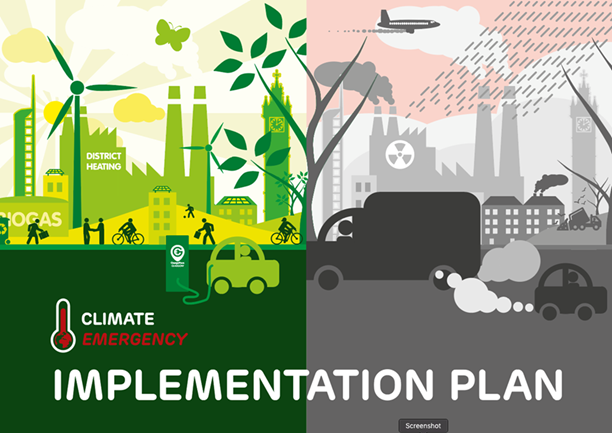 Glasgow’s Housing Strategy addresses the key issues set out in the Scottish Government’s Housing Strategy - ‘Housing to 2040’ - with a focus on delivering affordable and sustainable housing that can meet the needs and demand of Glasgow’s people. This includes new supply of high quality low and zero-carbon homes the meet the ‘Glasgow Standard’ as well as an emphasis on meeting the challenges associated with holistic, whole building approach to investment and improvements to existing homes, particularly older tenements, to make them low and zero carbon fit for the future (‘Safeguarding Pre-1919 Tenement Stock’ report March 2021). Developing viable and deliverable finance packages for investment in improving the sustainability of existing housing is a key challenge.
Glasgow’s Housing Strategy addresses the key issues set out in the Scottish Government’s Housing Strategy - ‘Housing to 2040’ - with a focus on delivering affordable and sustainable housing that can meet the needs and demand of Glasgow’s people. This includes new supply of high quality low and zero-carbon homes the meet the ‘Glasgow Standard’ as well as an emphasis on meeting the challenges associated with holistic, whole building approach to investment and improvements to existing homes, particularly older tenements, to make them low and zero carbon fit for the future (‘Safeguarding Pre-1919 Tenement Stock’ report March 2021). Developing viable and deliverable finance packages for investment in improving the sustainability of existing housing is a key challenge.
Transport accounts for a third of the carbon emissions produced by the city. If we are to decarbonise the sector, major changes are required to how people move about in the city. Transport is also directly linked to health inequality, deprivation, and economic performance.
The new transport strategy and Liveable neighbourhoods plan will be integral to the success not only in achieving the city’s net zero carbon targets, but also improving infrastructure for walking, wheeling and cycling, reducing the number of private vehicles on the road, as well as access to equitable, affordable, clean and reliable public transport.
The Liveable Neighbourhoods Plan will set out policy regarding transport infrastructure to support a well-connected and low carbon city, this will be supported by the City Development Plan which will also help to facilitate action proposed by the Regional Transport Strategy and Glasgow Transport Strategy. Embedding this in city-wide policy will help to bring about a modal shift in transport while also ensuring that housing sites are within locations supported by sustainable design and reducing the need to travel.
Investment in transport infrastructure in the city will prioritise public transport and active travel with a view to reducing the need to travel, improving public transport and active travel networks, and reducing the number of private vehicles on the road, enabling those vehicles which are on the road to transition to cleaner fuel alternatives.
Vision for 2030
By 2030 Glasgow supports the development of low-carbon retrofits and new buildings that are fit for the future, rolling out Innovation across the city, mainstreaming local renewable heat and energy generation projects.
By 2030, Glasgow will benefit from a comprehensive active travel network and well-connected network of 20-minute neighbourhoods.
- Healthy People and Healthy Natural Environment
Climate change presents significant challenges to human health and biodiversity. An increase in extreme climate events, such as heatwaves or flooding, threaten human health and wellbeing, both directly and indirectly, through impaired ecosystem functioning and reduced ecosystem services.
There is a growing sense, both locally and globally, that climate change is also a major public health issue. It has become one of the most significant contemporary challenges to health and wellbeing and could potentially be as serious as the current Covid-19 pandemic, in its long-term impacts.
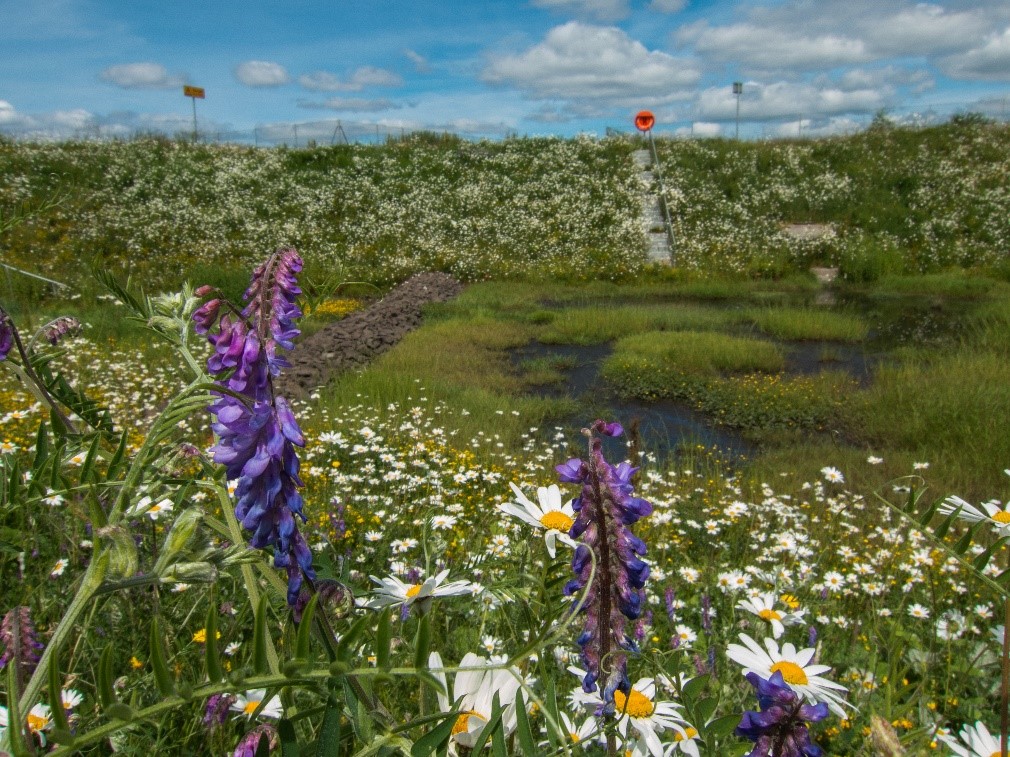 It has been known for some time that good quality natural landscape in urban areas can affect how people feel, affecting their physical and mental health. The benefits are varied, including physical benefits from green infrastructure, for example improved air quality, less noise pollution and reduced risks from flooding or heatwaves, benefits for recreation and interaction with nature. These spaces also have an impact on mental wellbeing, social networks and resilient communities supporting evidence that urban green space can support public health.
It has been known for some time that good quality natural landscape in urban areas can affect how people feel, affecting their physical and mental health. The benefits are varied, including physical benefits from green infrastructure, for example improved air quality, less noise pollution and reduced risks from flooding or heatwaves, benefits for recreation and interaction with nature. These spaces also have an impact on mental wellbeing, social networks and resilient communities supporting evidence that urban green space can support public health.
The Covid-19 pandemic has shown just how crucial access to good quality natural landscape is, and just how important Glasgow’s many parks are to the wellbeing of its citizens. We will work with our partners to address climate change, whilst also closing the gap on the health inequalities existing in the city.
Vision for 2030
By 2030, the city will have healthy green & biodiversity corridors, improving open space provision and increasing tree cover, while also providingopportunities for active travel corridors.
- A Climate Resilient City
Covid-19 has drawn out the importance of greenspace and the natural environment for all of us. A daily walk in the park became one of the few opportunities for people to get out of their homes. There is a common thread running through both the Covid-19 and climate emergencies, showing the perilous disruption and imbalance between our lives and that of other planetary species and eco-systems. We need to look again at these relationships and fundamentally seek to reset our place within them. The city are re-thinking their way of working whilst supporting post COVID recovery.
 This will require investing in more collaborative approaches and supporting our natural ecosystems to build future resilience. We have been developing action to create a more balanced relationship between us and other species, ultimately leading to a healthier, more attractive, and equitable city, whilst addressing our climate and ecological emergency.
This will require investing in more collaborative approaches and supporting our natural ecosystems to build future resilience. We have been developing action to create a more balanced relationship between us and other species, ultimately leading to a healthier, more attractive, and equitable city, whilst addressing our climate and ecological emergency.
Vision for 2030
By 2030, the city’s Vacant and Derelict Land is widely used for greening and rewilding, renewable energy generation measures and reducing flood risk, as well as being accessible to all in the community to invest in and use.
Submitted by Karin Luhaäär on
